Monjayaki
Monjayaki is a local comfort food that represents the Tokyo area of Japan, originating in the Tsukishima district. Even today, Tsukishima Monja Street is known as the birthplace of monjayaki. People often say, “Okonomiyaki is Osaka, Monjayaki is Tsukishima,” which shows just how famous Tsukishima’s monjayaki is.
Like okonomiyaki, monjayaki is cooked on a hot iron plate, but its texture and cooking method are quite different. Monjayaki is made by mixing very runny flour batter with ingredients such as cabbage, spicy cod roe, and seafood, resulting in a crispy, gooey, and soft texture. In contrast, okonomiyaki uses a thicker, pancake-like batter mixed with ingredients, creating a fluffy and hearty consistency.
Tsukishima Monja Street
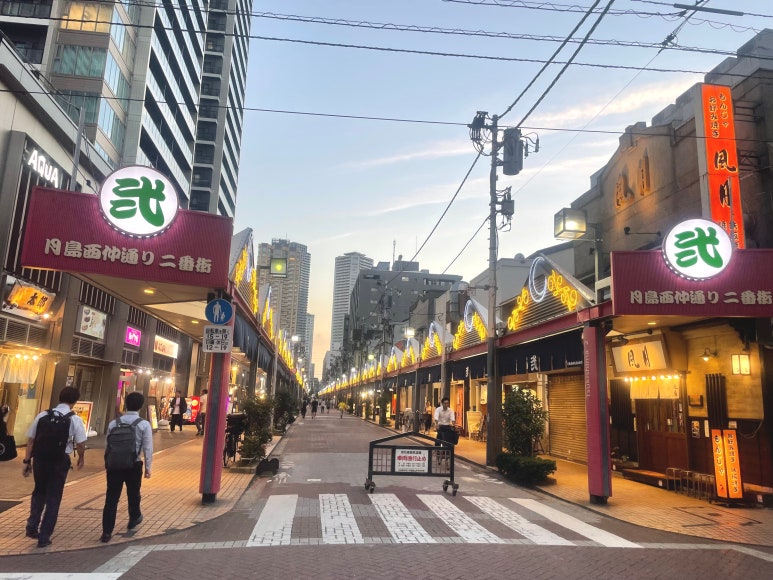
Tsukishima Monja Street(月島もんじゃストリート) is located in Tokyo’s Chuo Ward, and you can find the street right after getting off at Tsukishima Station on the Yurakucho Line. From Tokyo Station or Yurakucho Station, it takes about 20 minutes by train to reach Tsukishima.
Nearby, you’ll find the large wholesale seafood market of Tsukiji and the glamorous, sophisticated district of Ginza—perfect places to explore together for dining and sightseeing.
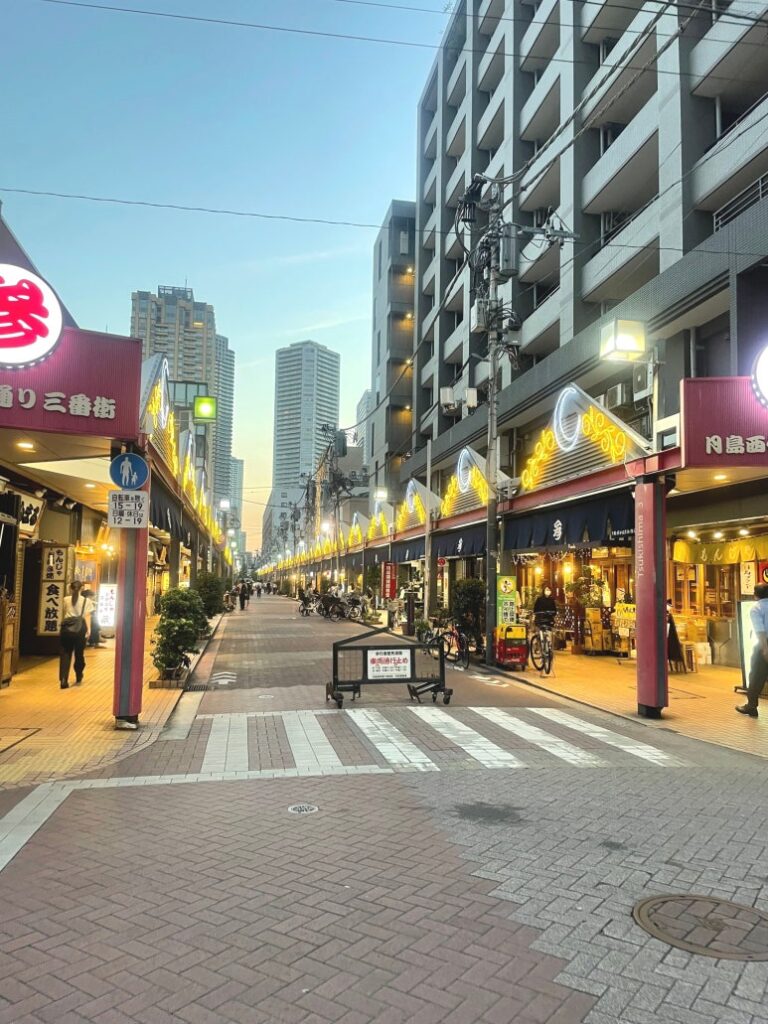
Tsukishima Monja Street is officially known as Nishinaka-dori Shopping Street (西仲通り商店街).
The street extends from Tsukishima 1-chome to 3-chome, with a total length of about 500 to 600 meters.
Lined with around 70 to 80 monjayaki restaurants on both sides, it’s a pleasant area where you can enjoy a stroll and feel Tokyo’s local charm.
Moheji
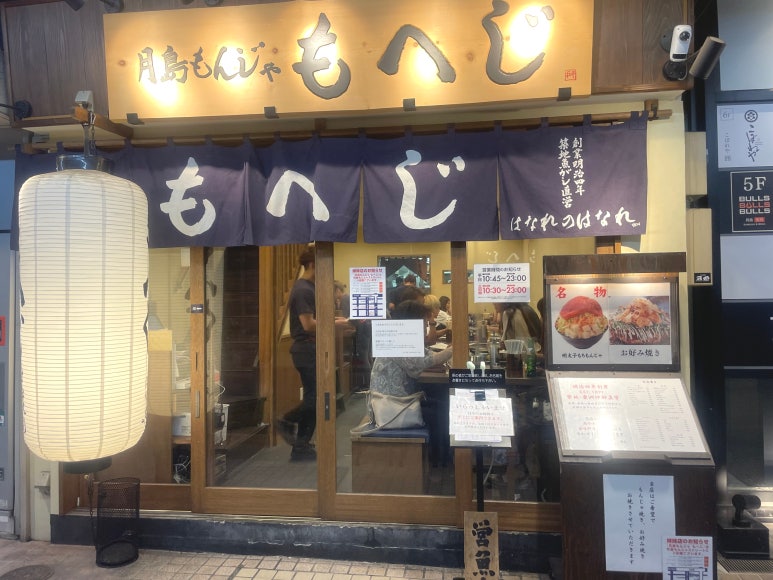
Moheji (もへじ) is one of the most popular restaurants on Tsukishima Monja Street.
It was originally founded in 1871 (Meiji 4) by a Tsukiji fish wholesaler, and is known for its refined seafood expertise and its seafood-style monjayaki, a tradition that has become deeply rooted in Tsukishima’s monja culture.
When I visited on a weekday, I was able to enter without a reservation, even though it was a branch location.
However, nearly all the seats were already taken, and many people were waiting in line outside the restaurant.
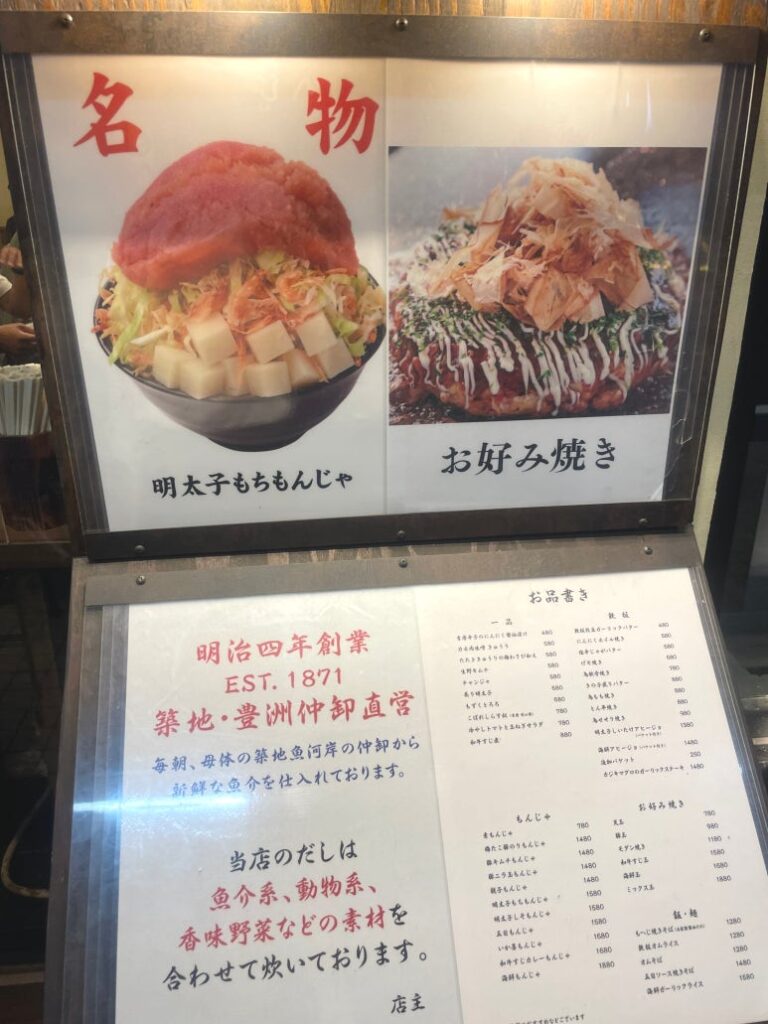
This is the menu displayed at the entrance of Moheji.
The restaurant’s specialty is Mentaiko Mochi Monja, and since they specialize in teppan-style cuisine, they also serve okonomiyaki along with monjayaki. As the restaurant was founded by a former fish wholesaler, they are said to bring in fresh seafood every day.
The price of monjayaki at Moheji varies depending on the ingredients, but at the time of my visit, it was around 1,500 to 1,700 yen per dish.
Tsukishima Monja Street is generally open from 10 a.m. to 10 p.m., though opening hours may differ by restaurant, so it’s best to check in advance before visiting. Many restaurants also take a short break after lunch and reopen later in the afternoon.
How to Eat Monjayaki
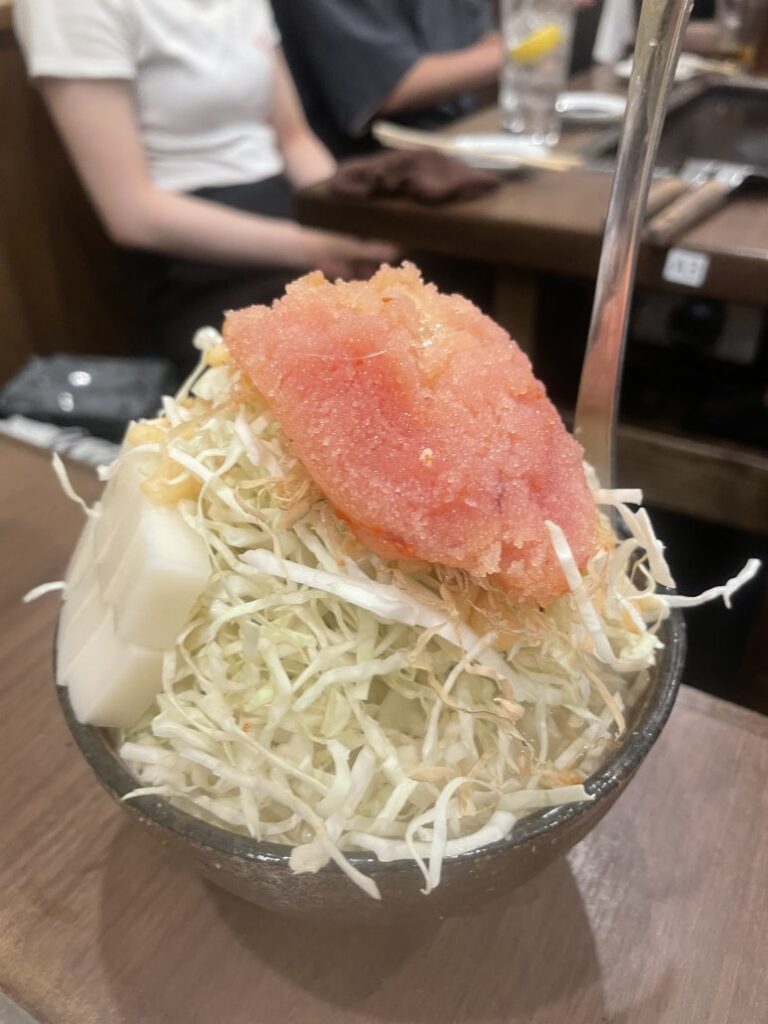
1. Order the restaurant’s specialty, Mentaiko Mochi Monja, at Moheji on Tsukishima Monja Street.
Monjayaki comes in many varieties depending on the ingredients used.
This time, I tried Moheji’s popular Mentaiko Mochi Monja.
2. Cook the chopped cabbage and other vegetables on the hot iron plate.
keeping the batter aside for later.
3. Once the vegetables are cooked, they’re shaped into a ring with an open center. The runny batter is poured into the middle, then mixed and cooked together with the remaining ingredients.
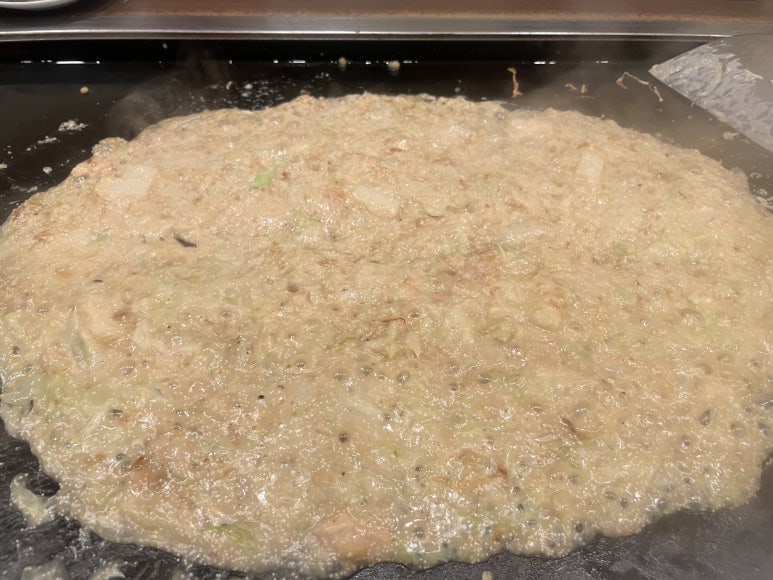
4. Spread the mixture thin and wide over the plate.
The thinner it is, the crispier and more fragrant it becomes.

5. Leave the finished monjayaki on the iron plate, and eat it by scraping from the edges with a small spatula called “hera.”
The real charm of monjayaki is eating it directly from the hot iron plate.
Recommended Dishes at Moheji
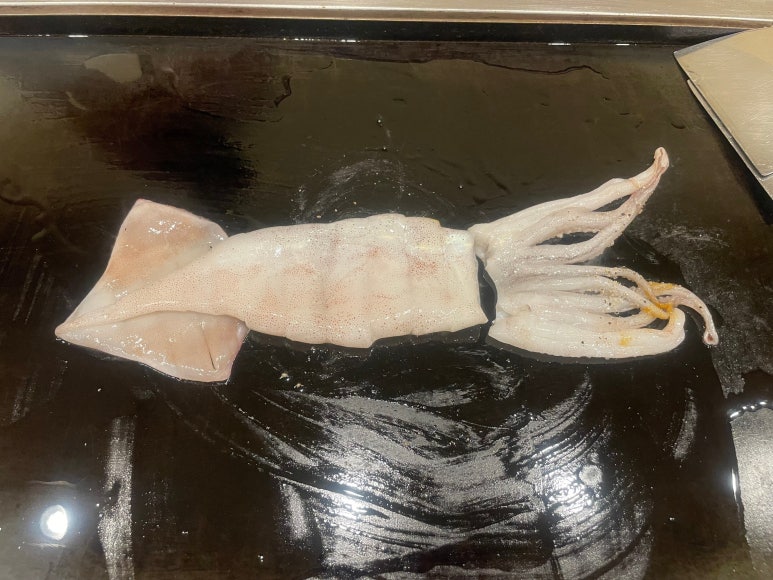
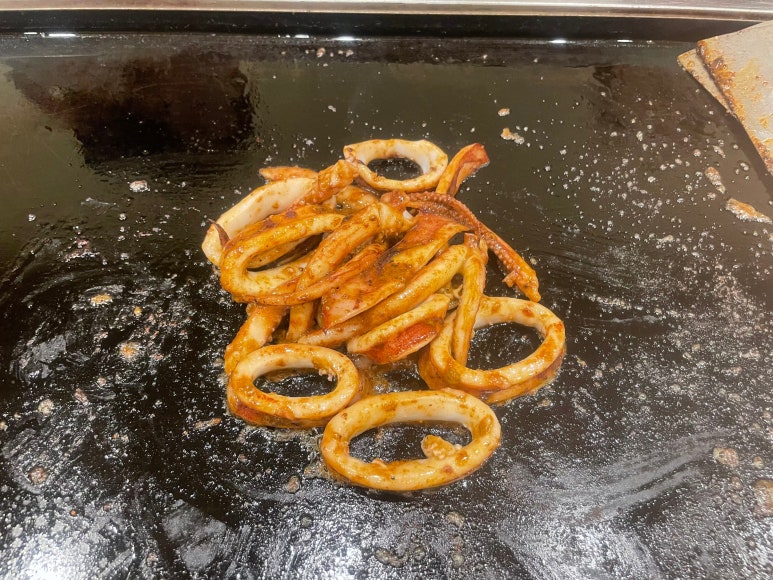
At Moheji, they serve not only monjayaki and okonomiyaki but also a variety of teppan-style dishes. The menu includes items such as potato butter, grilled chicken thigh, tonpeiyaki, ajillo,
and tuna garlic steak, offering plenty of options to choose from.
I ordered the grilled squid on the iron plate, and although I don’t usually eat squid, it was so soft and flavorful that I couldn’t stop praising it while eating.
As expected from a restaurant run by seafood experts, I realized that even the same squid can taste completely different when it’s truly fresh and well-prepared.
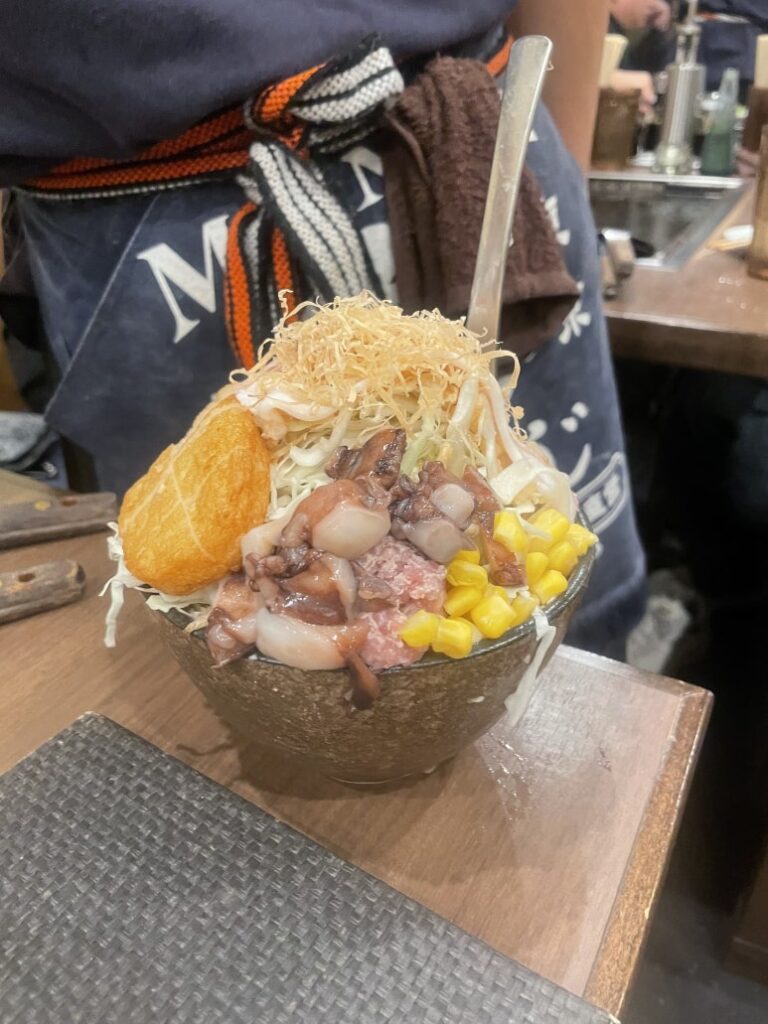
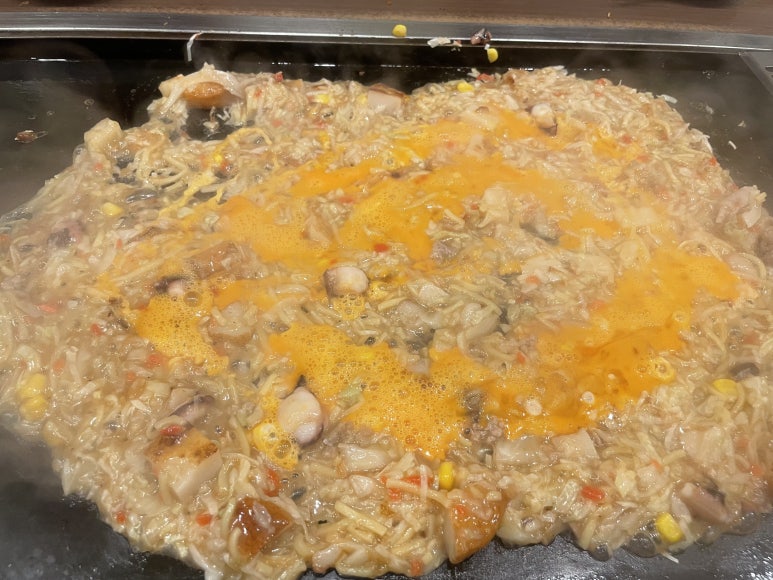
At Moheji, a well-known restaurant on Tokyo’s Tsukishima Monja Street, the Mentaiko Mochi Monja was so delicious that I ordered another one — the Gomoku Monja.
“Gomoku” means a dish made with a mix of various ingredients, and this one included satsuma-age (fried fish cake), soba noodles, octopus, and corn. I also added an egg topping for extra flavor.
It was my first time trying monjayaki, and although it’s similar to Osaka’s okonomiyaki, the soft yet crispy texture was incredibly appealing. It was so good that even after returning to Osaka, I found myself visiting monjayaki restaurants for a while.
If you visit Osaka, try okonomiyaki;
if you visit Tokyo, don’t miss monjayaki —
especially at Moheji on Tsukishima Monja Street.
■Moheji official website
■Tsukishima Monja Street: Moheji Hanare Branch

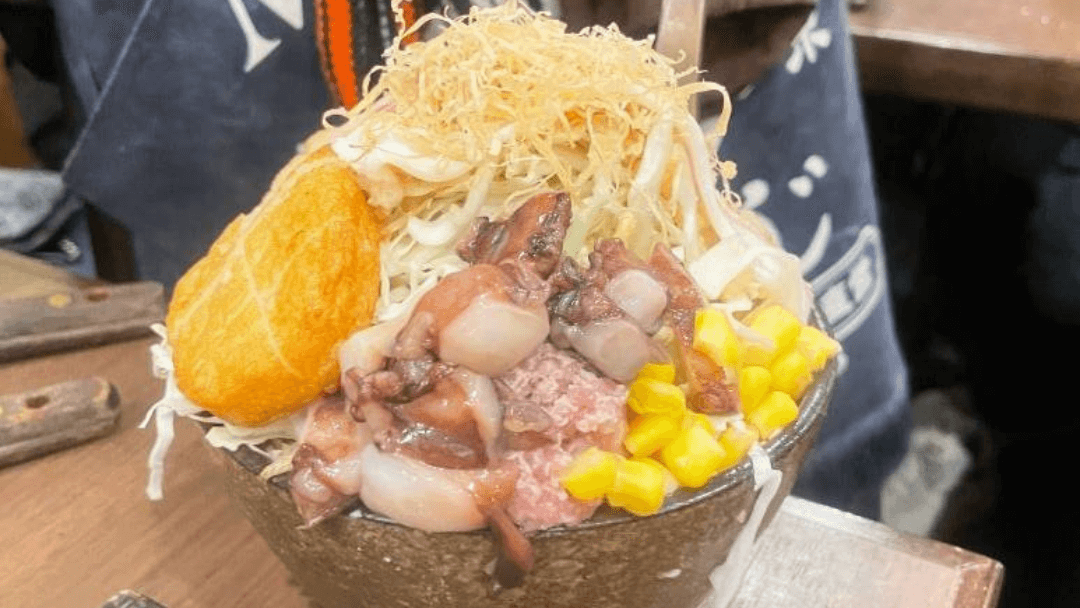


Comments